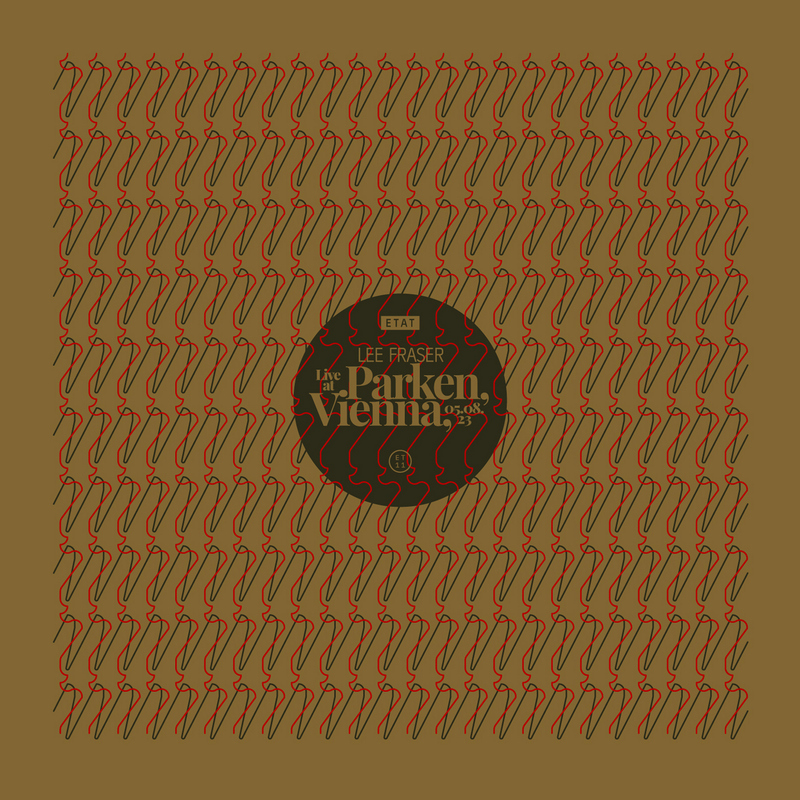It’s been far too long. Six years since Lee Fraser‘s last album, Cor Unvers, and a full decade since his debut, Dark Camber, both of which were among my very best albums of 2018 and 2014 respectively, and both of which continue to blow my mind anew every time i return to them. So it’s genuinely exciting to see that Fraser is finally back with an 18-minute EP featuring a live performance that he gave in Vienna last year.

Fraser works very slowly in Csound, creating synthetic instruments from scratch, shaping their behaviours and then meticulously sculpting the results. This lengthy and laborious process is one of the reasons for his relatively small output. Furthermore, it begs the question of what such a painstaking approach means when presented in the more ostensibly spontaneous context of a live performance. So when Fraser and i sat down to record our Dialogue together in late 2018, we explored this question. Fraser explained that he effectively worked in a similar way:
“the live performance would not be too dissimilar to aspects of my compositional process, in that these instruments […] in Csound, I would just use those in the live context… and mix between two or three or however many there are.”
However, this is guided by Fraser’s keen sense of longer-term compositional design:
“I really need to know where I’m going […] when I do these live performances, so I do have an idea, there is some sort of teleological drive to each sequence within a live performance that is fulfilled with more choreographed or planned sequences.”
One of the defining characteristics of Fraser’s music is a combination of extreme tactility and immediacy, using sounds that feel so close and so tangible that you could seemingly just reach out and touch them. However, this is balanced by an elusive quality, in which the timbres of Fraser’s palette, while evoking real-world sources, always maintain the clear fact that they’re synthetic. It’s a disarming duality, real and unreal simultaneously.
One of the most compelling things about this live performance is the way Fraser bridges the gap between rhythm and pitch. In the opening sequence they’re shown to be different points on the same continuum as a series of tiny, tapping ricochets flex each way, resulting in powerful momentary impacts and also nascent forms of tone, like a rudimentary tune being bludgeoned out of solid rock. In the minutes that follow, the same sense of spontaneity continues, leading to strange middleground burblings, a deep bass presence (manifesting as both pitch and rumble) and light noise bursts, periodically peppered with more percussive blows. The extremity of this opening sequence is reinforced by it being highly polarised, occupying extremes of register.
It’s into this rather raw soundscape that a more controlled kind of pitch begins to materialise, initially as piercing tones at the edges of the stereo field, but becoming increasingly measured, focused and (in every sense) centred, until a little triadic arpeggio of sorts appears, becoming the gem-like, shining centre of this still-polarised universe, in a texture that sounds dizzyingly close yet having enormous scope. Low granular bursts expand this further, becoming a rich chorus of elements, some of which are again at the cusp of rhythmic repetition and discernible pitch, in the process occasionally almost sounding like a synthetic voice trying to speak.
It’s a sequence that suggests (threatens) the possibility of an explosion, but instead Fraser redirects it into a granular environment that hints at the beginning of the performance while also throwing a variety of rhythmic and tuned ideas into an accelerating, impossibly homogeneous soundscape. This is allowed real time to speak and develop (a trait of all Fraser’s music), revealing clearly the evolutionary nature of everything we’re hearing.
Pitch takes over in the following section, in the form of super rich, buzzy tones that smack hard, though Fraser breaks them up and diffuses things back to just upper registers before some rough impacts and a choir of playful blipping breaks out. There’s a beautiful sense of balance maintained here, slow-moving pitch bands at the periphery providing a context (and a boundary) for the free-wheeling bangs and quasi-melodic elements within. These all fuse into another passage where Fraser allows them time to be heard, and shape-shift slightly, in an extended suspension that’s ultimately overrun by more strong impacts and, ultimately, a huge noise wall. The wall becomes filtered, transforming into rumble and a mixture of juddering tones and a final, heavily slapped, angular melody. The closing aftermath is a blank space of random noise with a trace of buzz dying away at its centre.
It’s an exhilarating, mesmeric performance, demonstrating that, just as Fraser said, his live music really isn’t so far removed from what he fashions in the studio. On the one hand, it leaves me feeling all the more impatient for new music from him, yet it’s impossible to argue with the fact that, with Lee Fraser, it’s always well worth the wait.
Released late last month, Live at Parken, Vienna, 05.08.23 is available as a free download from Austrian netlabel ETAT.
